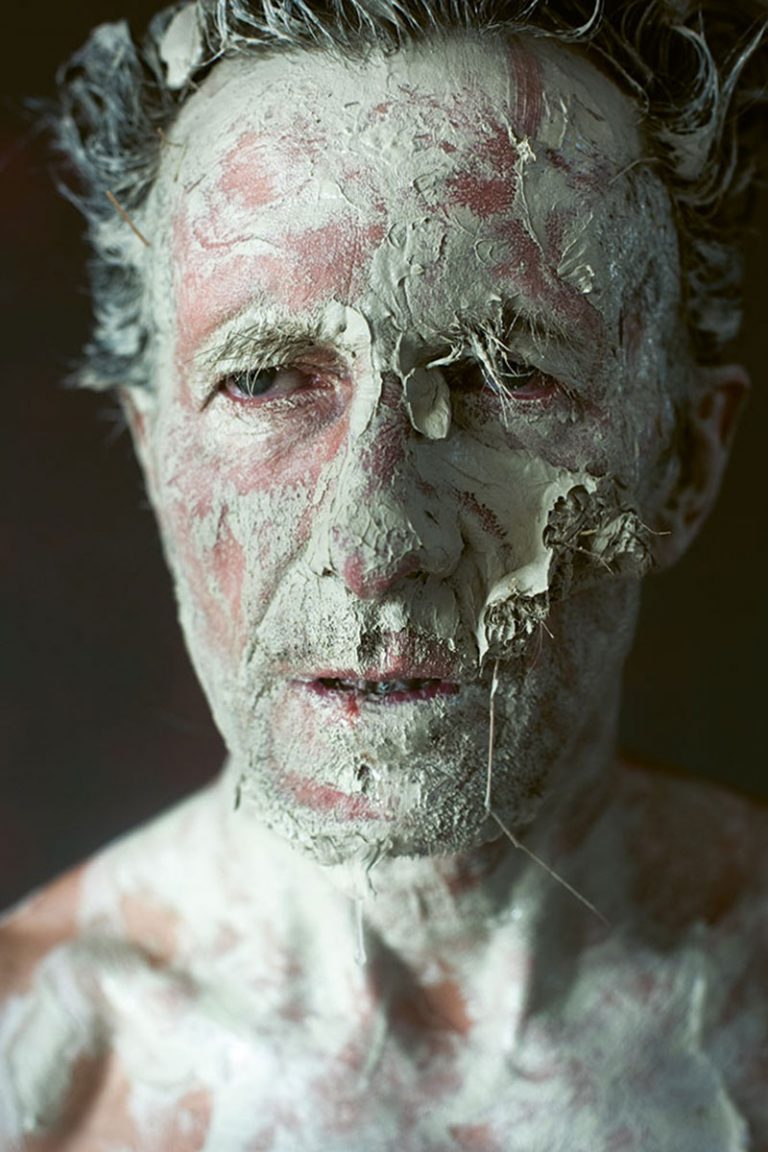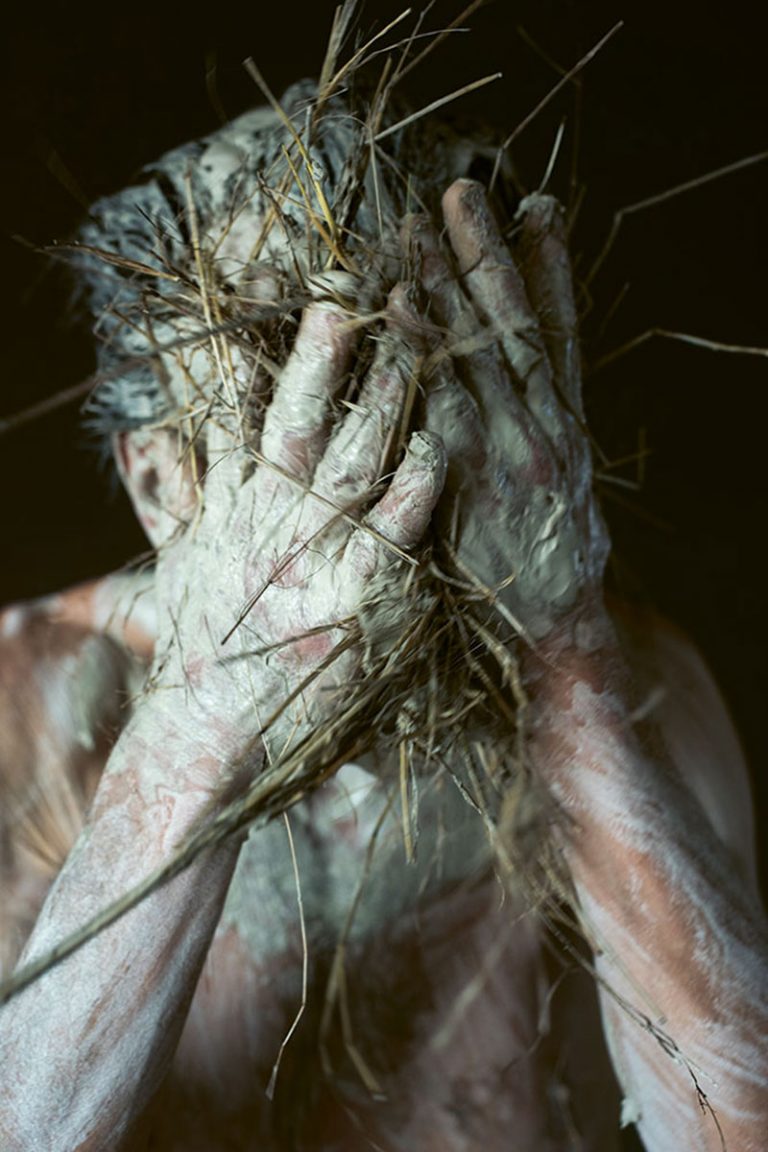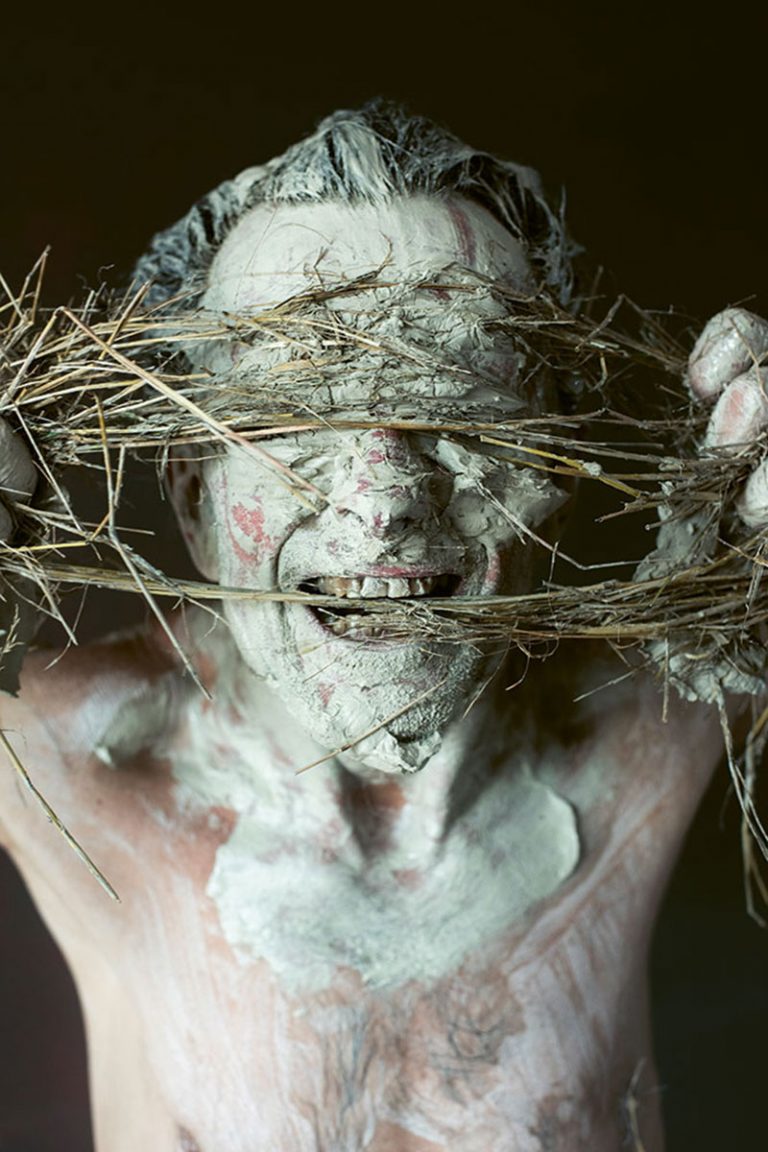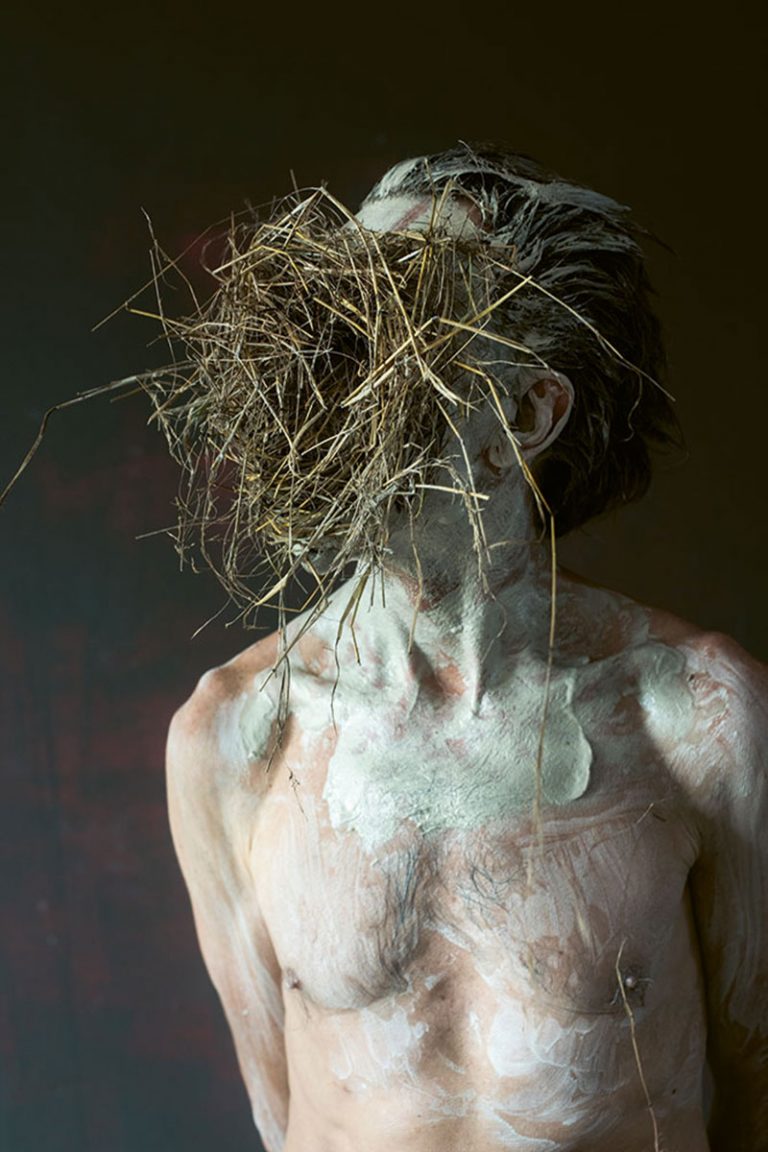FLEWID VOLUME TWO
Photographer: Angelo Cricchi
Writer: Davide Dormino
Your work seems like as a way for the body to reclaim its place, what drives you to use it as a means and an end?
Yes the body is still our great unknown, our mind is constantly questioning itself and reading itself in its own language, when with the body we are in another country with another language and it is necessary to dance and all kinds of improvisations that go from tremor to singing to translate it.
What do you feel are the feminine and masculine aspects in your performances?
These are aspects that I like to mix, I can start by making me breasts and a monstrous penis and I will give birth. I am not exclusively on one shore but I go from one to the next depending on whether the wind carries me here or there.
What sacrifices have you made in your life for art?
It would have been a sacrifice not to do art. For me art is this space where I am finally myself, delivered from morality and conformism. On stage finally I am totally free and I can shout my astonishment to be in the world.
I saw you prepare for the transfiguration performance, I helped you build the “stage”, I saw you carefully knead the clay and set up your materials. Your preparation is a ritual, surgical even. What role do you confer to the discipline of your work as an artist other than for performances?
Yes all these little rituals help me to enter a certain psychological state. The preparation of the clay is already a form of hybridization with this material that will become an extension of my body, so it must be done with intelligence not to risk setting in motion my immune system, I say it here with humor but it is something deep in fact.
Earth is the primary material for every sculptor. What was the moment, if there was one, when you realized that you needed to use sculpture?
I began by being a painter, sculpture, then the performance gradually arrived in order to be closer to life. Art must be a way of putting life in parenthesis as if to objectify it. In fact I started to study biology, and I think I continue with this same horizon: to understand the logic of the living. Art is also a tool for correcting reality. The artist opens a gap for a new collective vision. What do you think about it? Yes, completely, I’m amazed at how much people seem to think it’s normal to exist. All my artistic activity is based on the idea of making visible the strangeness of the body.
The repetition of everyday life is in a way what produces in us a form of collective hallucination in which everything here is natural, objectively quantifiable, with a sense of normality. How then to wake up from this intimate lie?
We must then live what Freud called oceanic movements: the death of a loved one or the state of love so that suddenly the hallucinating nature of life will regain its strength. Disfiguration in the artistic sense of the term does not become an act to belittle, but rather a process of creation and amplification, aimed at reviving in the viewer a feeling of fascination for the world and for his own body.











